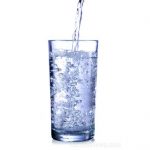
Study finds that water-filter pitchers are not equally effective
Tuesday, July 10, 2018 by RJ Jhonson
http://www.realsciencenews.com/2018-07-10-study-finds-that-water-filter-pitchers-are-not-equally-effective.html

If you are concerned about microcystins in your drinking water, you can turn to commercially available water-filter pitchers to keep you safe. However, researchers from The Ohio State University (Ohio State) warn that not all pitchers on the market are created equally. While some do their job excellently, some may be letting more microcystins through than what’s considered safe for your health.
The scientists from Ohio State compared three popular pitcher brands (they refused to name which brands exactly in the study) ranging in price from $15 to $50. What they found was that while all pitchers were able to reduce the concentration on microcystins, only one was able to remove the toxins thoroughly.
Microcystins are toxins produced by cyanobacteria, also known as blue-green algae. Their impact on human health is such that when the toxin contaminated Toledo City’s water supply in 2014, more than 400,000 residents lost access to drinking water for several days. With the water supply shut down, the residents had to depend on bottled water.
“Because drinking-water treatment plants also use activated carbon, I figured that these home filters might also remove some microcystins, but I wasn’t expecting results this good and such big differences among the pitchers,” said Justin Chaffin, senior researcher and research coordinator at Ohio State’s Stone Laboratory and senior author of the study.
The three pitchers used in the experiments used various forms of activated carbon to remove toxins. In theory, the carbon acts as a magnet that draws toxins in the water to itself, leaving the fluid clean enough for human consumption.
When asked which brands his team used for the study, Chaffin gives only the slightest clue, “In general, the cheaper the pitcher, the worse job it did filtering out the toxins.”
They noted that the three pitchers filtered water at different speeds, which had an impact on their ability to remove toxins. The worst performing pitcher filtered a liter of water in two minutes, the middle performer in four minutes, and the best took six minutes. The least effective pitcher used a coconut-based activated carbon filter while the two others used a combination of different types of filters.
“Contact time really seems to matter. If you run the water through really fast, the microcystins and other organic molecules don’t have time to bind to the carbon molecule and stick to the filter,” he said.
For reference, they used contaminated water from Lake Erie for their experiment. They diluted the liquid into various concentrations, but ultimately used 3.3 micrograms per liter – the concentration reported during the 2014 event in Toledo. (Related: Graphene-based water filter that produces potable water invented by scientists.)
The team also decided to determine if the filters removed the toxins for good. They obtained expired filters through which they ran pure, deionized water.
“We didn’t find the microcystins in that filtered water at all, so there’s a pretty good chance that what’s being removed is stuck to the filter for good,” Chaffin said.
He did warn, however, that despite their effectiveness, even the best-performing pitcher should only be used as a back-up on normal days to remove any toxin the treatment plants may have missed. In instances when a no-drink advisory is issued, it’s better to follow it so as not to risk harm upon oneself.
Harmful effects of microcystins
Toxins from algal blooms are among the most common threats to drinking water these days. Microcystins are particularly dangerous to both humans and farm animals that drink contaminated water.
Among the most immediate effects of microcystins on humans is liver damage, which leads to secondary effects like jaundice and photosensitization or increased sensitivity to light. Although considered non-carcinogenic, microcystins are known to damage the cells and cause apoptosis, and possibly, promote tumor formation.
Learn more about filters that keep drinking water safe at WaterFilters.news.
Sources include:
Tagged Under: Tags: activated carbon, algal blooms, clean water, contaminated water, cyanobacteria, environment, good water, goodscience, Microcystins, polluted water, real science, research, toxic water, water filter, water health, water pitcher





